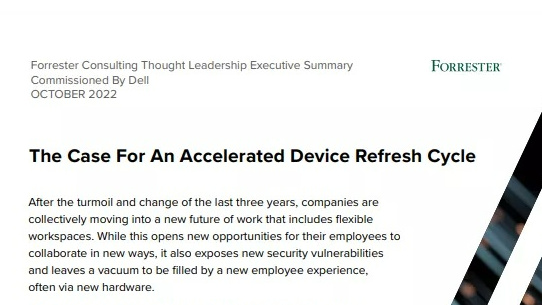Google announces its very own cloud CDN
The solution builds upon Google's existing content network, but makes it more automated for faster delivery


Google has released its very own content delivery network (CDN), making it faster to send big files such as videos to users.
Despite already having partnerships with a number of CDN providers including Akamai, Cloudflare, Fastly, Level 3 Communications and Highwinds, it is automating the service, making it attractive to third parties that may be looking to speed up their delivery network.
"Google Cloud CDN uses Google’s globally distributed edge caches to cache HTTP(S) Load Balanced content close to your users. Caching content at the edges of Google’s network provides faster delivery of content to your users while reducing the load on your servers," Google wrote in the announcement.
The company explained it works by caching the files using a load balancer. When a user first requests access to the file, a request is sent to a network location closer to the user than a company's own servers.
When it realises it is unable to fulfill the request, the edge cache forwards it to the business's own instances. These instances then respond back to the request and deliver the content to the user, while also caching it for future requests.
Next time the content is requested from the same edge cache, it responds directly to the user rather than bouncing back to the company's servers. This saves time and also, overheads because instances don't have to over-run.
Google's Cloud Cache can be activated for all cacheable content and can be activated using a single command using a load balancing-backed service.
Sign up today and you will receive a free copy of our Future Focus 2025 report - the leading guidance on AI, cybersecurity and other IT challenges as per 700+ senior executives
Although this is new for Google, such techniques for speeding up content delivery are already operation with Amazon Web Services' CloudFront CDN and Microsoft's Azure CDN.

Clare is the founder of Blue Cactus Digital, a digital marketing company that helps ethical and sustainability-focused businesses grow their customer base.
Prior to becoming a marketer, Clare was a journalist, working at a range of mobile device-focused outlets including Know Your Mobile before moving into freelance life.
As a freelance writer, she drew on her expertise in mobility to write features and guides for ITPro, as well as regularly writing news stories on a wide range of topics.
-
 TPUs: Google's home advantage
TPUs: Google's home advantageITPro Podcast How does TPU v7 stack up against Nvidia's latest chips – and can Google scale AI using only its own supply?
-
 Microsoft Excel is still alive and kicking at 40
Microsoft Excel is still alive and kicking at 40News A recent survey found Gen Z and Millennial finance professionals have a strong “emotional attachment” to Microsoft Excel
-
 'Digital hide-and-seek': Workers are wasting hundreds of hours a year sourcing the information they need to carry out their role
'Digital hide-and-seek': Workers are wasting hundreds of hours a year sourcing the information they need to carry out their roleNews Knowledge workers globally are wasting a quarter of their working week tracking down information, new research from Atlassian has revealed.
-
 Untethered: How CIOs and CISOs are paving the way for the new hybrid workforce
Untethered: How CIOs and CISOs are paving the way for the new hybrid workforceWhitepaper Effective techniques to transition from exposed legacy infrastructure to an effective zero trust strategy
-
 Unlocking the power of your digital services
Unlocking the power of your digital servicesSponsored Businesses have invested significant cash into technology since COVID-19, but are they really getting their money's worth?
-
 Delivering fast and secure digital experiences for the modern hybrid workforce
Delivering fast and secure digital experiences for the modern hybrid workforceWhitepaper A new approach to digital experience monitoring that can monitor the health of all systems
-
 Collaboration is the glue that holds your business together
Collaboration is the glue that holds your business togetherSPONSORED A combination of productivity tools and cloud telephony can enable the best from your workforce
-
 The future of work and the forgotten workforce
The future of work and the forgotten workforcewhitepaper How to deploy a mobile-first strategy so no one gets left behind
-
 The case for an accelerated device refresh cycle
The case for an accelerated device refresh cycleWhitepaper Achieving a more cost-effective device lifecycle overall
-
 Employees are choosing how they work
Employees are choosing how they workWhitepaper And with the right secure digital strategy, this could be a great thing for your business: today and far into the future